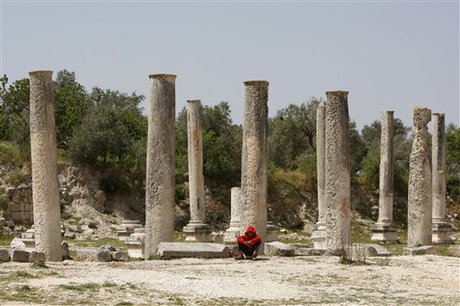Israelis, Palestinians Would Gain Billions from Peace

Israelis and Palestinians would gain billions of dollars from making peace with each other while both would face daunting economic losses in case of other alternatives, particularly in case of a return to violence, according to a new study released on Monday.
The RAND Corp., a U.S.-based nonprofit research organization, interviewed some 200 officials from the region and elsewhere during more than two years of research into the costs of the Israeli-Palestinian conflict. Its main finding was that following a peace agreement, Israelis stood to gain $120 billion over the course of a decade. The Palestinians would gain $50 billion, marking a 36-percent rise in their average per-capita income, the report said.
In contrast, the Israeli economy would lose some $250 billion in foregone economic opportunities in a return to violence, and the Palestinians would see their per-capita gross domestic product fall by as much as 46 percent, the report said.
The findings are in line with long-time arguments that peace is in the economic interest of both sides.
"We hope our analysis and tools can help Israelis, Palestinians and the international community understand more clearly how present trends are evolving and recognize the costs and benefits of alternatives to the current destructive cycle of action, reaction and inaction," said C. Ross Anthony, co-leader of the study and director of RAND's Israeli-Palestinian Initiative.
The study looked into five different scenarios: a two-state solution, a coordinated unilateral withdrawal, an uncoordinated unilateral withdrawal, nonviolent resistance and a violent uprising. Not surprisingly, the economic benefit for both sides dropped considerably in each alternative scenario down the ladder.
Some of the elements of the nonviolent resistance scenario are already unfolding with Palestinians taking actions to put economic and international pressure on Israel. The study found that Israelis could lose $80 billion and Palestinians could lose $12 billion relative to current trends. But compared with a two-state solution, losses from the non-violent resistance scenario become even more dramatic: about $200 billion for the Israelis and $60 billion for the Palestinians.
RAND teams are currently in the region, presenting their findings to both Israeli and Palestinians officials. The study was funded by an independent donor and the think tank insisted it was not advocating, just providing tools for leaders to make good decisions.
In reaching their conclusions, researchers devised a "cost-of-conflict calculator" that factored in issues like Israel's defense budget, its trade relations and what it would cost to relocate West Bank settlers. For Palestinians, variable costs included potential destruction of property, freedom of movement and banking regulations.
The Palestinians seek the West Bank and Gaza Strip as part of their future state, yet numerous rounds of peace talks have been unsuccessful.
"A two-state solution produces by far the best economic outcomes for both Israelis and Palestinians," said Charles Ries, co-leader of the study and an executive at RAND. "In a decade, the average Israeli would see his or her income rise by about $2,200, versus a $1,000 gain for Palestinians, compared with our projection for present trends. But that only works out to 5 percent for each Israeli versus 36 percent for the average Palestinian, meaning Israelis have far less and Palestinians far more economic incentive to move toward peace."
RAND spokesman Jeffrey Hiday said copies of the study had been sent to officials on both sides of the conflict, including the Israeli prime minister's office and Foreign Ministry and the Palestinian Finance Ministry.
Israeli officials declined comment, while Palestinian officials could not immediately be reached for comment.



